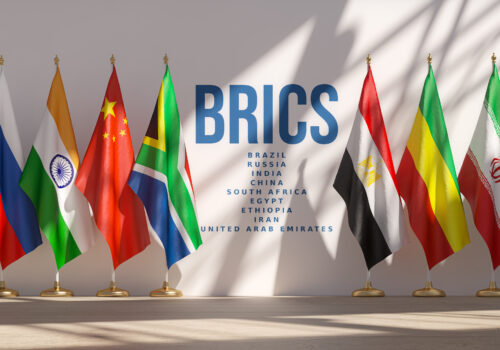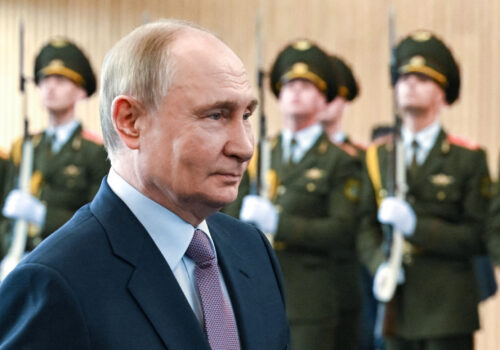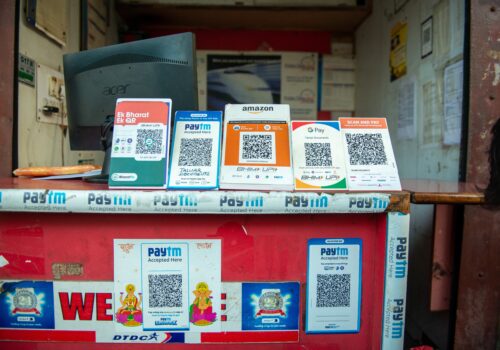What really came out of this year’s BRICS summit?
Much of the international media coverage surrounding the 2025 BRICS summit in Rio this week focused on who wasn’t in the room, Russian President Vladimir Putin and Chinese President Xi Jinping. Their absence spurred renewed speculation about the coherence and future of the BRICS format, which began as a grouping of Brazil, Russia, India, and China, later added South Africa, and in the past couple years has enlisted several new members.
Yet beyond the headlines, Brazil’s tenure at the head of the expanded BRICS yielded several notable outcomes that reflect both BRICS members’ difficulty in finding common ground and their ability to make some important progress in areas of shared interest.
So, what came out of Rio? To begin with, a joint declaration titled “Strengthening Global South Cooperation for a More Inclusive and Sustainable Governance” summarized the outcomes and reaffirmed many of the BRICS group’s long-standing priorities. Chief among these were calls for the reform of multilateral institutions, including the usual call for Brazil and India to become permanent members of the United Nations Security Council. There was also an expected call for voting power in the World Bank and the International Monetary Fund to be readjusted to reflect a changing global order. On climate, the group introduced a new framework for joint action, an important signal of the group’s coordinated position ahead of the upcoming United Nations Climate Change Conference, known as COP30, which will be held in Belém, Brazil, in November. On technology, the statement advocated for more inclusive global discussions on artificial intelligence governance, echoing concerns that Global South perspectives are often underrepresented in these debates. Among the more contentious points, the declaration also touched on ongoing conflicts, calling for peace in Gaza and condemning recent bombings in Iran (a member of the BRICS) and attacks on Russian civilian infrastructure.
One of the more tangible outcomes was the proposal for an institution inspired by the World Bank’s Multilateral Investment Guarantee Agency. This new institution would be aimed at facilitating infrastructure and development investment across the Global South by providing investment guarantees to reduce political risk. Still in its early phases, the plan signals the BRICS group’s continued interest in building parallel or complementary institutions to existing Western-dominated frameworks. It also signals an interest in providing tools for riskier developing countries to attract needed investment, and there is no indication that these guarantees would be limited to investment from BRICS member countries. It has been presented as the BRICS Multilateral Guarantees initiative, which is likely to continue its development through 2025 and 2026.
At the same time, a significant aspect of the statement was the omission of the United States by name. This omission likely reflects ongoing trade and tariff reduction negotiations between the United States and individual members of the BRICS group. Despite some political rhetoric to the contrary, many BRICS members remain deeply integrated with the US market. Consider trade: BRICS members’ exports to the United States represent a significant share of each member’s total exports—and, in many cases, a meaningful portion of their gross domestic product (GDP). This underscores an important point: While the BRICS countries are often perceived as a counterbalance to Western power, their economies remain linked to the United States in crucial ways.
What comes next?
With India set to assume the BRICS chair in 2026, the direction of the bloc will hinge in part on New Delhi’s priorities. For Brazil, the 2025 summit offered a platform to elevate its diplomatic voice, reinforce its bid for global governance reform, and continue to position itself as a pragmatic leader among emerging powers. The BRICS format is unlikely to become a geopolitical game-changer overnight, but it remains a platform where much of the world’s diplomatic future is quietly being negotiated.
The test for BRICS will be whether it can move from declarations to concrete action (such as with the BRICS Multilateral Guarantees initiative) and whether the group can manage its internal contradictions to build something greater than the sum of its parts.
Valentina Sader is a deputy director at the Atlantic Council’s Adrienne Arsht Latin America Center.
Ignacio Albe is a program assistant at the Adrienne Arsht Latin America Center.
Further reading
Mon, Jul 7, 2025
Building BRICS
Econographics By Bart Piasecki
Fifteen years after its founding, BRICS has evolved into a formidable counterweight to Western dominance in global economic governance. Yet despite its growing influence, the bloc’s ability to translate bold rhetoric into concrete results remains uncertain.
Thu, Jun 26, 2025
Putin cannot attend BRICS summit in Brazil as he fears arrest for war crimes
UkraineAlert By Peter Dickinson
Russian President Vladimir Putin will not attend next week’s annual BRICS summit in Brazil as he fears possible arrest for war crimes committed during the invasion of Ukraine, writes Peter Dickinson.
Mon, Apr 21, 2025
Fast payments in action: Emerging lessons from Brazil and India
Fintech Frontlines By
These lessons are shaping a framework governments can use to evaluate their need for central bank-led immediate payment systems, their potential structure, organizational features, and the trade-offs involved.
Image: Leaders of the BRICS group attend a meeting during the BRICS Summit in Rio de Janeiro, Brazil July 7, 2025. REUTERS/Ricardo Moraes



